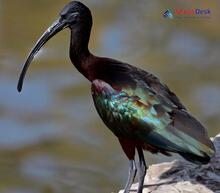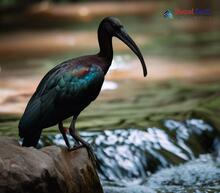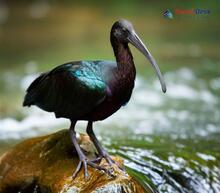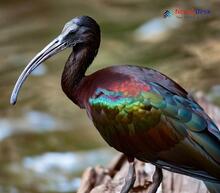The world of birds is vast and diverse, with species often capturing our imagination due to their unique appearances, intriguing behaviors, and fascinating evolutionary histories. Among these countless species, the Plegadis genus stands out as an exceptionally interesting group, that comprises three species of eponymous ibises. This article delves into the fascinating evolution tree, morphology, and ecology of the Plegadis genus while shedding light on its presence in Nepal.
The Evolution Tree of Plegadis Genus
Understanding the evolution tree of the Plegadis genus offers insights into how these extraordinary birds came to be. As a member of the Threskiornithidae family which comprises ibises and spoonbills, Plegadis is closely related to other genera within this group. The three distinct species of Plegadis are the glossy ibis (Plegadis falcinellus), the white-faced ibis (Plegadis chihi), and the less-known puna ibis (Plegadis ridgwayi). Based on genetic studies, it has been revealed that Plegadis has evolved from a common ancestor shared with other members of the Threskiornithidae family. Over time, adaptations to various ecological settings have driven speciation within this group.
Morphology and Ecology
The morphology of the Plegadis species shares several features; they exhibit striking iridescent plumage with a glossy purplish and bronze-green sheen. Their long, slender decurved bills, prominent in all ibises, help them probe for prey in shallow water environments such as marshes or rice fields. These birds feed on a variety of vertebrates and invertebrates like insects, crustaceans, mollusks, amphibians, as well as small fish.
Breeding colonies are established near water bodies with an abundance of food sources. Nests are built using twigs or reeds, often in dense vegetation or on the ground, since Plegadis species are known for their semi-colonial nesting behavior. Plegadis birds are seasonally migratory, moving to breeding and wintering grounds based on regional climate conditions.
Presence in Nepal
The diverse ecosystems of Nepal serve as an ideal refuge for several bird species, including members of the Plegadis genus. The glossy ibis (Plegadis falcinellus) is particularly attracted to Nepal's lowland Terai region, which features wetlands and marshy habitats suitable for foraging. Surrounding forests and grasslands provide roosting and nesting opportunities. Records of white-faced ibises (Plegadis chihi) and puna ibises (Plegadis ridgwayi) in Nepal have been scarce; hence conservation efforts mainly revolve around the glossy ibis population.
As an essential component of wetland ecosystems, the presence of Plegadis species is an indicator of a healthy environment. However, habitat degradation due to human activities threatens their survival. In order to preserve these fascinating birds, understanding their unique evolution tree, morphology, and ecological preferences becomes highly significant.
In conclusion, the Plegadis genus captures the imagination of ornithologists and birdwatchers alike. As a fascinating branch within the Threskiornithidae family tree, their intriguing morphological adaptations combined with distinctive ecology offer a wealth of research opportunities. Moreover, being a unique aspect of Nepal's avifauna, their thriving presence highlights the importance of preserving the country's rich biodiversity.




